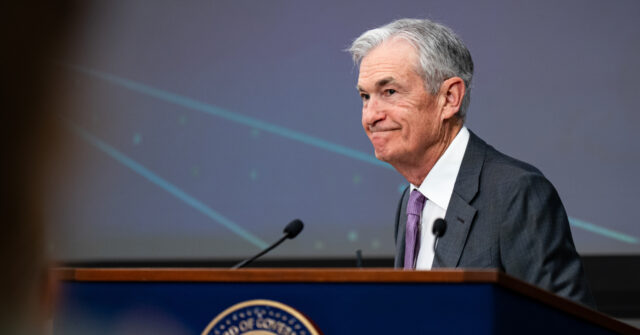The U.S. economy has declined slightly and unevenly despite recent financial market volatility and on-and-off-again tariff policies.
Six of the twelve Federal Reserve districts reported slight to moderate declines in activity, three saw no change, and the remaining three noted slight growth, according to the Federal Reserve’s Beige Book released Wednesday. Taken as a whole, economic activity in the United States declined slightly in recent weeks, the Fed’s report said.
While business sentiment remains cautious and uncertainty—particularly surrounding trade policy—continues to weigh on decision-making, the report also highlights areas of stability and adaptation. Companies across several sectors are adjusting supply chains, slowing capital expenditures, and in some cases shifting production back to the U.S. in response to rising tariffs.
“All districts reported elevated levels of economic and policy uncertainty, which has led to hesitancy and a cautious approach to business and household decisions,” the report said.
The report could support President Donald Trump’s claims that the Fed is behind the curve on interest rates and should have already started cutting. On Wednesday morning, President Trump reacted to a report showing fewer than expected private sector jobs by once again calling on Fed chairman Jerome Powell to reduce interest rates.
The Fed cut interest rates three times at the end of last year but stopped cutting as Trump took office this year, despite broadening concerns over an economic slowdown and positive news on inflation.
Reshoring Gains Traction
A notable theme across districts was the growing interest in reshoring and domestic substitution. Firms in New York, Cleveland, and other regions reported clients shifting production out of China or seeking U.S.-based suppliers to avoid current and potential tariffs. Some manufacturers said they were investing in domestic capacity or fielding more inquiries from customers hoping to stabilize supply chains by bringing production home.
Though manufacturing overall declined slightly, several districts said the longer-term trend of realignment could help support U.S.-based industry.
Labor Market Flat But Stable
Employment levels were generally flat across the country, with a few districts noting modest increases or declines. Businesses reported less urgency in hiring and more caution due to economic uncertainty, but layoffs were limited. Most firms said labor availability had improved, and many noted a drop in employee turnover and stronger applicant pools.
Wage growth continued at a modest pace. In several districts, firms reported delaying raises or holding pay steady, but said they were still able to fill roles. A Minneapolis contact described better attendance at job fairs, while others pointed to immigration-related constraints in sectors like construction and hospitality.
Tariffs Raising Costs, Prompting Pass-Through
Prices rose at a moderate pace in most districts, with tariffs driving a widespread increase in input costs. Several businesses said they planned to pass along cost increases within the next three months, using price hikes, surcharges, or line-item adjustments.
Stukkm trategies varied. Some absorbed the costs or shifted sourcing, while others raised prices more broadly—even on items not yet affected by tariffs—to preserve margins. Economic data through April indicate that consumer inflation has been low to non-existent in recent months.
Consumer Spending Mixed, with Pockets of Strength
Consumer spending was mixed. While discretionary retail slowed in some areas, others reported strong sales of big-ticket items, such as vehicles and appliances, as consumers looked to get ahead of future price increases. Auto sales were particularly strong in Chicago, Cleveland, and New York, though some dealers warned of potential sticker shock if tariff effects push prices higher in June and July.
Travel and tourism softened modestly in several districts due to lower international visitor numbers, but domestic leisure activity remained generally stable.
Housing and Credit Conditions Hold Steady
The residential real estate market was little changed, with most districts reporting flat or slightly slowing construction and sales. However, rising inventories in some areas were viewed as a potential positive for constrained markets.
Loan demand was mixed but credit quality remained strong. Bankers in multiple districts described cautious clients and some pullbacks in deal activity but noted that delinquencies remained low and lending standards broadly stable.
Outlook Cautious But Not Negative
The Fed said the overall outlook for the economy remained “slightly pessimistic and uncertain,” a phrase unchanged from the prior Beige Book. Even so, a few districts—such as Philadelphia and Boston—noted that some firms had grown more optimistic, especially those positioned to benefit from supply chain shifts or expecting a resolution to trade tensions.
The Beige Book was compiled by the Federal Reserve Bank of St. Louis using information gathered through May 23. It is intended to provide anecdotal insight into economic conditions ahead of the Fed’s next policy meeting on June 17–18.
Read the full article here


